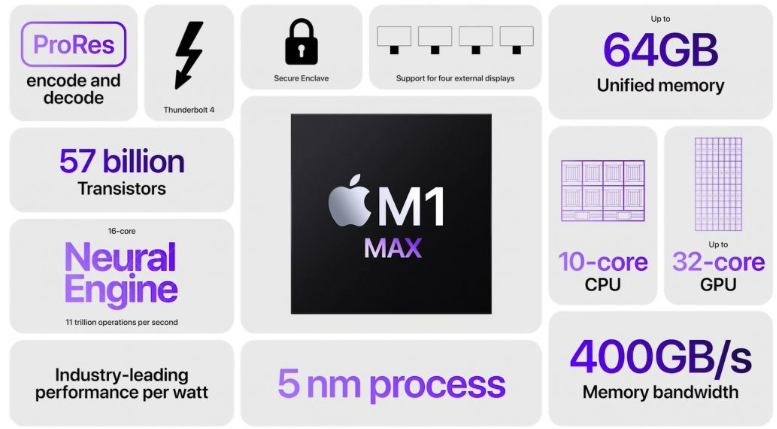MacBook are iconic. Combining portability with an unmatched design, they’re powerhouses that outshine most of the competition. While Windows laptops might have historically held the gaming crown, Apple’s making formidable strides in that arena.
Thanks to Apple’s optimized chip and software chemistry, they have exceptional battery life. Not to mention the myriad of accessories tailored to elevate your MacBook experience.

With Apple’s silicon at their heart, these machines tackle demanding tasks like a breeze. While focusing on the newly introduced M2 MacBook Pro, the M1 variant continues its relentless run. Built for the pros, the MacBook Pro thrives in areas like coding, graphic design, video editing, audio wizardry, and more. So, the million-dollar question: Should you splurge on the latest M2 MacBook Pro or opt for the value-rich M1 MacBook Pro? Dive in with us as we dissect this choice for you.
Design
the MacBook Pro M1 and M2 range are very similarly designed. While the processor choice may change everything, dimensions only vary depending on the display size. The MacBook Pro 14-inch has a height of 0.61 inches, a width of 12.31 inches, and a depth of 8.71 inches. The only difference here is in weight. The MacBook Pro 14-inch M1 Pro and M2 Pro weigh 3.5 pounds, while the MacBook Pro 14-inch M2 Max is ever so slightly heavier at 3.6 pounds. Will you notice? Not likely.
The MacBook Pro 16-inch is predictably larger but has the exact dimensions whether you buy the M1 Pro or M2 Pro — a height of 0.66 inches, width of 14.01 inches, and depth of 9.77 inches. Again, the weight is slightly different. The M1 Pro and M2 Pro weigh 4.7 pounds with an extra 0.1 pounds for the M2 Max chip.
The screens are similar too. You get either a 14.2-inch or 16.2-inch Liquid Retina XDR display. The former has a resolution of 3024 x 1964, while the latter goes up to 3456 x 2234. Both types have XDR brightness of up to 1,000 nits sustained full-screen or 1,6000 nits peak with HDR content. There’s also wide color (P3), True Tone, and ProMotion technology for adaptive refresh rates up to 120Hz.


Both the M1 and M2 models have the same audio system. They all have a high-fidelity six-speaker sound system with force-canceling woofers, wide stereo sound, and support for Spatial Audio when playing music or video with Dolby Atmos. They also all have a studio-quality three-mic array with high signal-to-noise ratios to improve your calls.
Ports are nearly the same across the board too, with three Thunderbolt 4 (USB-C) ports, an HDMI port, and an SDXC card slot. The newer M2 Pro/Max model has Bluetooth 5.3 support and Wi-Fi 6E, while the older model sticks with the still exemplary Bluetooth 5.0 and Wi-Fi 6. Also, the newer model’s HDMI port supports multi-channel audio output
Specification:
The clue is in the M2. Whether you go for the MacBook Pro 14-inch or 16-inch, there’s a significant processor upgrade here. While the M1 Pro offers up to 10 cores on the CPU with 8 performance cores and 2 efficiency cores, along with up to 16-core GPU, the M2 Pro surpasses that
The M2 Pro now has up to 12 cores with an extra two efficiency cores. Its GPU goes up to 19 cores, depending on if you go for the 14-inch or 16-inch model.
It’s a similar story for the M1 Max and M2 Max. While the M1 Max has a 10-core CPU, the M2 Max adds an extra two efficiency cores. There are also up to 38 cores for the GPU compared to the maximum of 32 cores for the M1 Max. Simply put, it makes a difference with better performance on the M2 Pro and M2 Max.
Here’s the information presented in a table format:
| Specification | M1 Chip | M2 Chip |
|---|---|---|
| Manufacturing Process | TSMC’s 5nm process (N5) | TSMC’s enhanced 5nm process (N5P) |
| Transistor Count | 16 billion | 20 billion |
| CPU Cores | 4 high-performance “Firestorm” cores and 4 energy-efficient “Icestorm” cores | 4 high-performance “Avalanche” cores and 4 energy-efficient “Blizzard” cores |
| CPU Clock Speed | 3.2GHz | 3.49GHz |
| CPU cores origin | iPhone 12 lineup’s A14 Bionic chip | iPhone 13 lineup’s A15 Bionic chip |
| GPU | 8-core GPU | 10-core GPU |
| Memory Support | Support for 8GB or 16GB unified memory | Support for 8GB, 16GB, or 24GB unified memory |
| Memory Bandwidth | 68.25GB/s | 100GB/s |
| Neural Engine | Yes | 40 percent faster Neural Engine |
| Media Engine | Hardware-accelerated H.264 and HEVC | Hardware-accelerated H.264, HEVC, ProRes, and ProRes RAW |
| Video Decode Engine | Yes | Higher-bandwidth video decode engine |
| Video Encode Engine | Yes | Video encode engine, ProRes encode and decode engine |
| Image Signal Processor (ISP) | Yes | “New” image signal processor (ISP) |

Fabrication Process and Transistors
Like the A14 Bionic, the M1 chip is built using TSMC’s first-generation 5nm fabrication process. On the other hand, the M2 uses TSMC’s second-generation 5nm process like the A15 Bionic chip. The M2 adds four billion additional transistors for a total of 20 billion – 25 percent more than M1. The enhanced 5nm fabrication process is at the heart of many of M2’s performance and efficiency improvements
CPU
The M1 and M2 both have four high-performance and four energy-efficient cores, but while the M1 features “Firestorm” and “Icestorm” cores from the A14 Bionic chip, the M2 offers “Avalanche” and “Blizzard” from the A15 Bionic chip. According to Apple, this results in 18 percent greater multithreaded performance than M1.
In early Geekbench benchmarks, the M2, which runs at 3.49GHz compared to 3.2GHz for the M1, earned a single-core score of 1,919, which is roughly 12 percent faster than the 1,707 single-core score of the M1 13-inch MacBook Pro. The M2 earned a multi-core score of 8,928, up about 20 percent from the 7,419 score of the M1 model. This is right in line with Apple’s claim that the M2 chip is up to 18 percent faster than the M1.

Both chips have high-performance cores with 192KB of L1 instruction cache and 128KB of L1 data cache. The energy-efficient cores have a 128KB L1 instruction cache, 64KB L1 data cache, and a shared 4MB L2 cache. The only difference here is that the shared L2 cache is larger on the M2 chip — 16MB instead of 12MB on the M1.
GPU
The M2 features two more GPU cores over the M1, resulting in a moderate boost in graphics performance. Apple says that the M2 has up to 25 percent higher graphics performance than M1 at the same power level, and up to 35 percent better performance at its max power. In early Geekbench Metal benchmarks, the M2 chip scored 30,627, a notable improvement over the 21,001 score earned by the M1.

Media Engine
Both the M1 and the M2 have dedicated video encode and decode engines for hardware-accelerated H.264 and HEVC, but the M2’s video engines are also able to accelerate ProRes and ProRes RAW to enable playback of multiple streams of 4K and 8K video. In addition, the M2’s media engine includes a higher-bandwidth video decoder, supporting 8K H.264 and HEVC video.

Unified Memory
The M1 and the M2 come in configurations with 8GB or 16GB of unified memory, but the M2 adds an additional, top-tier 24GB configuration. The M2’s memory controller can also deliver 100GB/s of unified memory bandwidth, a substantial improvement over the M1’s 68.25GB/s memory bandwidth.
Other Improvements
The M2 features improvements to several of Apple’s custom silicon technologies. For example, the Neural Engine can process up to 15.8 trillion operations per second — over 40 percent more than M1. The M2 also contains Apple’s latest Secure Enclave and a new image signal processor (ISP) for better image noise reduction.
Final Thoughts
Overall, the M2 chip offers moderate improvements over the M1, even if most M1 users are unlikely to notice significant improvements when upgrading to the M2. The M2’s advancements are generally worthwhile, if not transformative, and the chip is certain to provide a more up-to-date experience with lower-spec Apple silicon machines – especially for those coming from an Intel-based machine.
While the M2 offers improvements across the board thanks to its enhanced 5nm process, updated cores, and additional GPU cores, the major upgrades come to users who need to work with video, as well as those who have memory-intensive workflows. The M2’s higher-bandwidth video decoder and dedicated engine for ProRes and ProRes RAW video offer meaningful improvements for video editors, while the 24GB unified memory tier and 100GB/s of memory bandwidth significantly boost the capacity of M2 machines to deal with memory-hungry applications and intense multitasking.
